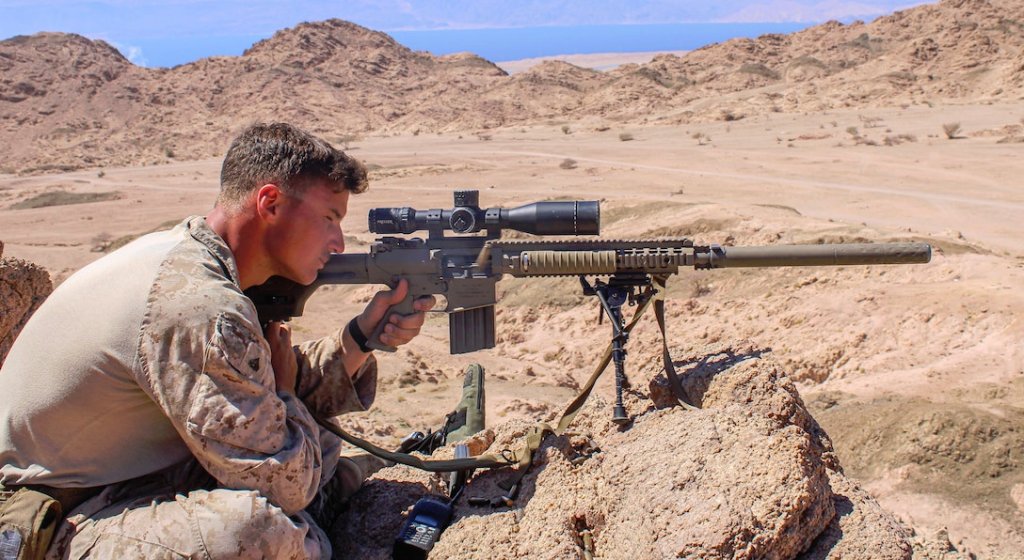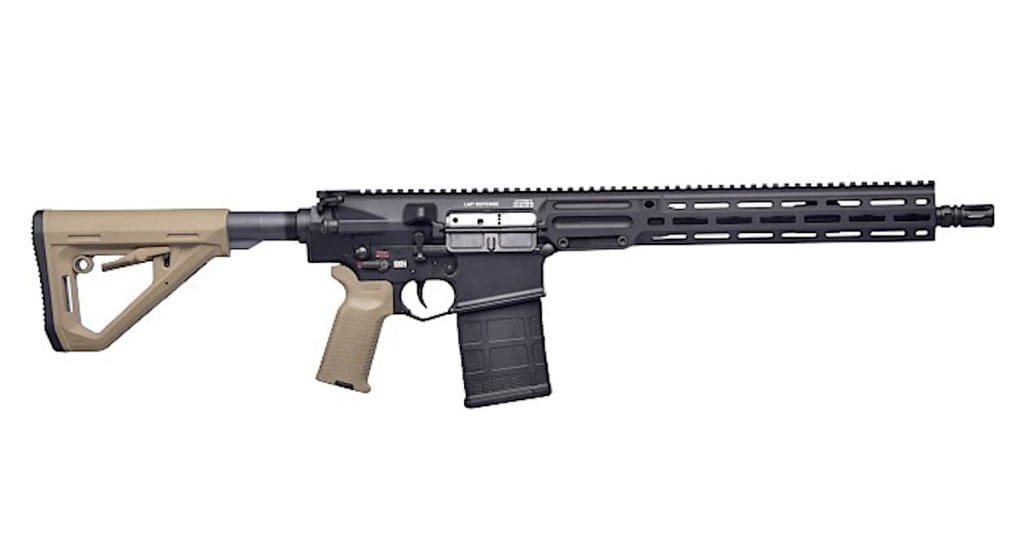U.S. Special Operations Command (SOCOM) recently awarded a contract for new rifles chambered to fire the 6.5mm Creedmoor round to Lewis Machine & Tool (LMT). The Mid-Range Gas Gun-Assault (MRGG-A) rifles will give special operators greater reach, as well as improved accuracy and terminal performance against targets at those longer ranges.
The Pentagon quietly announced the deal for the MRGG-As (sometimes also referred to as Medium-Range Gas Gun-Assault or Mid-Range Gas Gun-Assaulter rifles) in its daily contracting announcement on August 22. The contract, which covers “medium range gas gun-assault kits, spare parts and accessories, new equipment training, and engineering change proposals,” has a maximum ceiling of $92 million and runs through August 14, 2035.

LMT’s MRGG-A is a member of its Modular Ambidextrous Rifle System-Heavy (MARS-H) family, which are commonly described as AR-10-style rifles. The original Armalite AR-10 is the larger predecessor to the widely recognized AR-15/M16 pattern. Like the AR-10, as well as many AR-15/M16 variants and derivatives, all of the MARS-H versions listed on LMT’s website at the time of writing use the so-called direct impingement operating principle. This means that when the gun is fired, some of the gas that propels the bullet down the barrel is siphoned off and blown directly against the main action to cycle it. Variations on the AR-15/M16 pattern that use a physical gas piston instead are increasingly common. A piston keeps propellant gas, and the particulate matter within it, away from the gun’s action, reducing the chance of fouling and offering other maintenance and reliability advantages. These rifles are typically heavier and more expensive than their DI counterparts, though.

The MRGG-A configuration LMT has shown publicly has a 14.5″ barrel built into an upper receiver with a ‘monolithic’ Picatinny type rail for optics and other accessories that runs the full length of the top of the rifle. The sides of the handguard have additional accessory attachment points utilizing the increasingly popular M-LOK system from Magpul. The gun has ambidextrous controls and is capable of semi-automatic and fully-automatic fire.
LMT has also shown MRGG-As with scopes from Nightforce Optics, as seen in the picture at the top of this story. Back in 2021, Nightforce announced it had secured a contract from SOCOM for ATACRTM 4-20×50 F1 scopes “to augment multiple systems in the SOCOM inventory and… to support the MRGG (Mid-Range Gas Gun) once it is fielded.” In U.S. service, those optics are also referred to as Ranging-Variable Power Scopes (R-VPS).
SOCOM’s MRGG effort traces back to the late 2010s and was subsequently split into two separate subcomponents, the MRGG-A and the MRGG-S (for sniper). It has also been presented in the past as primarily intended for use within the Naval Special Warfare (NSW) community, which includes the U.S. Navy’s SEAL teams, though it is unclear if this is still the case.
In 2023, SOCOM chose a separate AR-10-esque design with a 20-inch barrel from Geissele Automatics to become the MRGG-S. The Pentagon’s contracting notice at the time noted that, despite the name, the MRGG-Ss would be used in the “sniper support weapon” and “designated marksman rifle” roles.
The 2023 video below from Geissele Automatics offers a brief overview of the company’s MRGG-S rifle.

The MRGSS-S takes “advantage of advances in ammunition and weapons technology to improve the intermediate range sniper rifle lethality, reliability and performance when suppressed during 50-1,500 meter engagements,” the Pentagon’s notice added.
The shorter-barreled MRGG-A will still offer special operators in the assault role a significant boost in capability when it comes to range and terminal effectiveness. SOCOM has said in the past that rifles chambered in 6.5mm Creedmoor, in general, could double a shooter’s probability of scoring a hit on targets up to 3,280 feet away (1,000 meters).
As a comparison, the 5.56x45mm M4A1 carbine, modified versions of which remain in use in the U.S. special operations community, has a maximum effective range of around 1,640 feet (500 meters), according to the U.S. Army. The 7.62x51mm M110, a designated marksman rifle in service across all branches of the U.S. military, as well as various U.S. federal government law enforcement agencies, can reach out to just under 2,625 feet (800 meters).


The MRGG-A is also heavier and bulkier than the M4A1. The U.S. special operations community does have a wide array of small arms options it can issue depending on the operational requirements, including if there is an expectation of close-quarters combat inside buildings or other confined spaces.
With all this in mind, SOCOM has also been looking into new light machine guns chambered in 6.5mm Creedmoor in recent years. The cartridge is seeing increasing interest elsewhere, too. In March, the U.S. Secret Service notably put out a contracting notice seeking information about potential 6.5 Creedmoor rifles to supplant its M110s.
There has been a broader drive within the U.S. military in recent years toward rifles firing larger cartridges with greater reach, as well as increased lethality at those ranges, driven heavily by combat experiences in Afghanistan during the Global War on Terror era. Concerns about improving adversary body armor had also been a factor. This is what led the U.S. Army to adopt the M7 rifle, which has been the subject of some controversy recently, as well as the companion M250 light machine gun. The M7 and M250 are chambered to fire the 6.8x51mm cartridge. Army special operations forces were involved in developmental testing of the M7 and M250, but it remains to be seen how widespread those guns might be issued within the broader special operations community.

In the meantime, U.S. special operators are now set to get new 6.5mm Creedmoor MRGG-A rifles from LMT.
Contact the author: [email protected]
